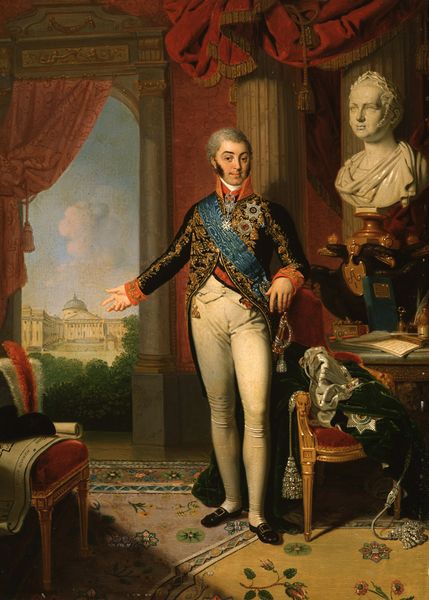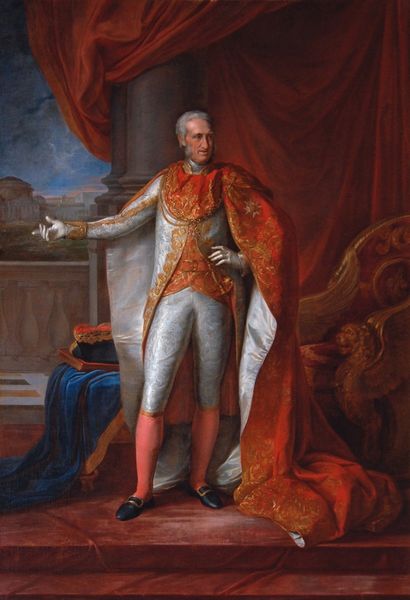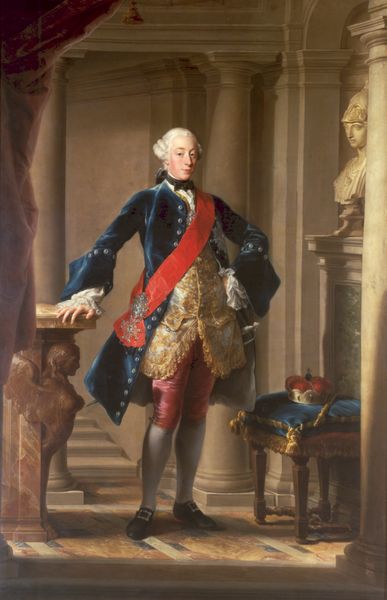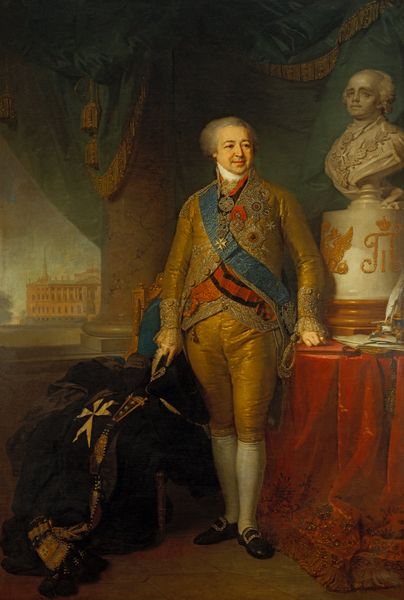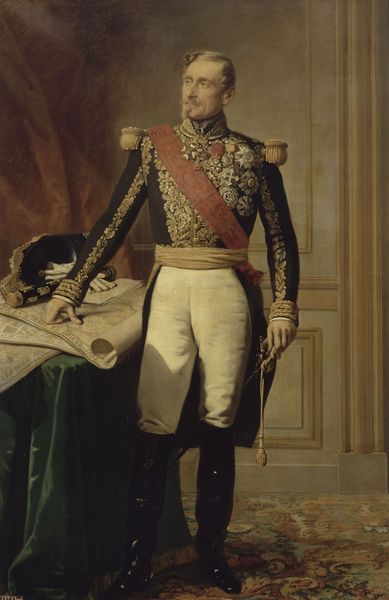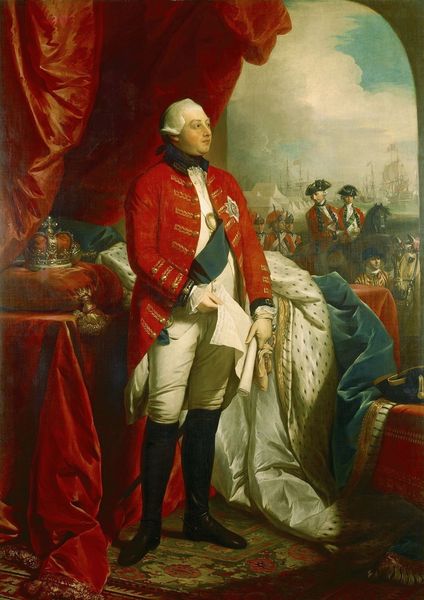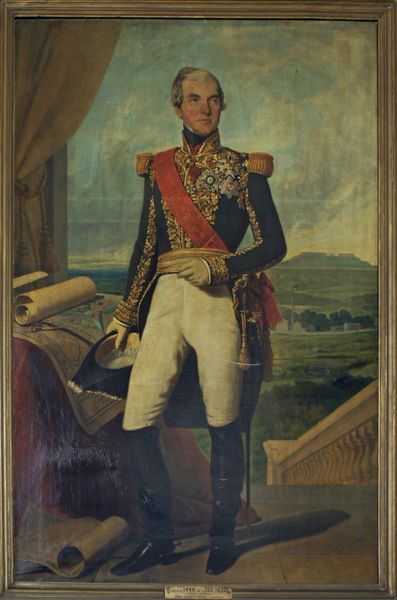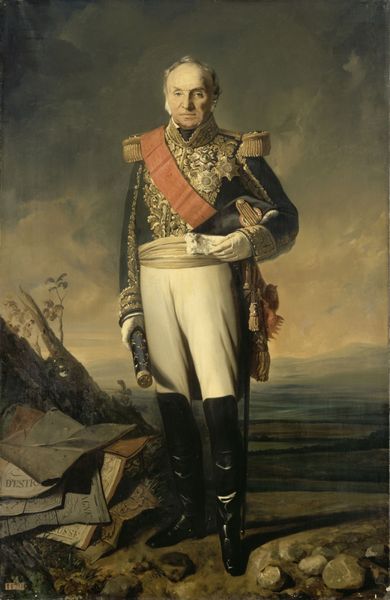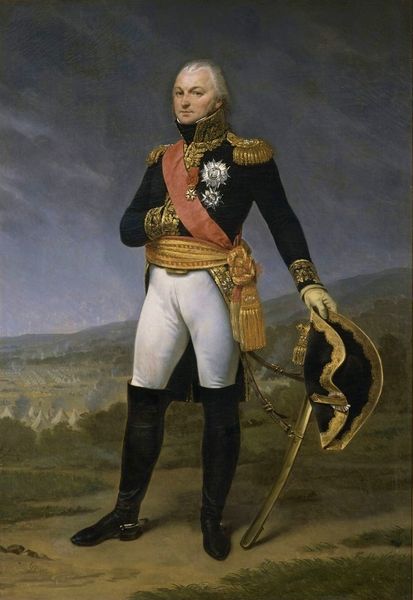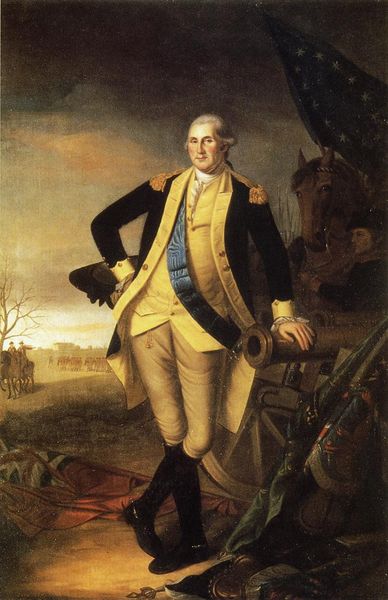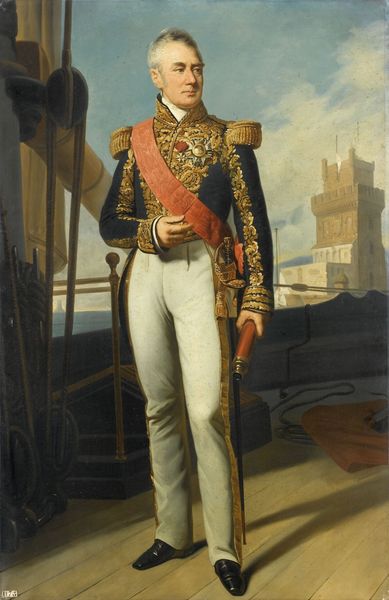
#
portrait
#
fashion design
#
cosplay
#
performing
#
famous-people
#
male-portraits
#
game character design
#
underpainting
#
costume
#
child character design
#
abstract character
#
lady
#
fashion sketch
#
mixed media
Copyright: Public domain
Editor: So here we have "Alexander I" by Vladimir Borovikovsky. It's a striking portrait of the Tsar in full military regalia, almost theatrical. It feels quite staged. What draws your attention when you look at it? Curator: I'm immediately drawn to the opulent materials and their manipulation. Consider the layers: the finely woven fabric of his coat, the smooth, cool marble of the bust behind him, and then the draped velvet, all meticulously rendered. This is not just representation; it's a careful construction of power through material display. Think about the labour involved in each of these elements – the weavers, the sculptors, the tailors – and how Borovikovsky synthesizes their efforts into a single, imposing image. Editor: That’s a really interesting way to look at it. I was focused more on Alexander's expression, but now I’m seeing the active role that craft and manufacture played in creating his image. Is this typical for portraits of this era? Curator: Absolutely. The portrait serves as a commodity itself. The materials used in Alexander’s attire speak volumes about Russia's wealth and access to resources. Moreover, portraiture provided consistent work for artists and those involved in the textile or sculpture industries. Borovikovsky strategically crafts a scene of imperial authority using both artistic skill and economic might, and how the labour that went into the fabrics of the coat could reflect the condition of workers during that time. What is depicted and how it's crafted is linked, so how does viewing the material production change our perception? Editor: That makes a lot of sense. It shifts my understanding from simply admiring the artistry to considering the entire system that enabled this image to exist. It shows me just how intertwined power, labor, and art truly are. Curator: Exactly. It's a potent reminder that art doesn't exist in a vacuum, but is deeply embedded in material realities. Editor: Thank you; it certainly gave me new appreciation of not only art's beauty, but its underlying socio-economic story. Curator: Likewise. I now understand the value in shifting perception from what it shows, to what it required to make.
Comments
No comments
Be the first to comment and join the conversation on the ultimate creative platform.
